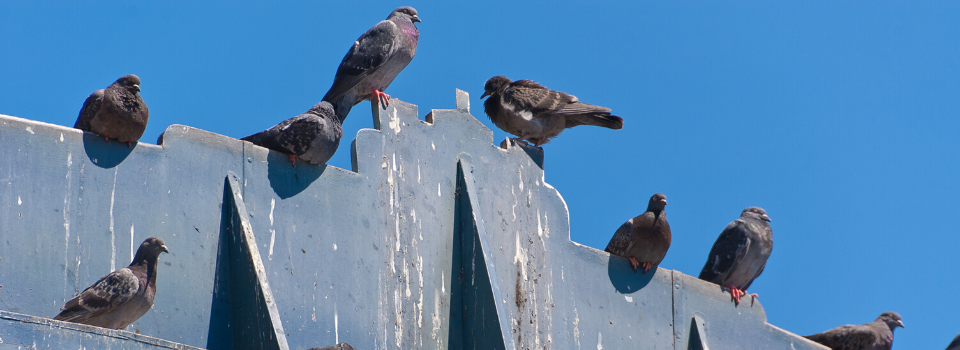The US is home to over 1100 species of birds. Unfortunately, the nesting and roosting habits of certain types of birds can often bring conflict with humans. Without effective bird control, some birds are capable of causing serious damage to homes or properties. Their droppings can stain and rot building materials as well as create unhealthy living conditions for residents.
The Hazards of Birds Nesting in Your Home
Exposure to bird roosts and nests that are heavily contaminated with dangerous fungal spores found in droppings increases the chance of inhalation. Humans are most at risk for infection when dry bird feces become airborne and travel through air vents and opens windows. Birds can harbor over 40 types of parasites and host internally 60 types of infectious diseases that can be spread by the dried bird droppings to you, your family, employees, and pets.
How to Tell if You Have Starlings Nesting in Your Home
Starling nests consist of twigs, leaves and dry grass as well as suitable man-made materials. There are a number of ways in which homeowners become aware of a bird problem. Sights, sounds and smells provide certain giveaways. Unlike robins that construct their nests in a neat bowl-like shape, starlings will stuff and cram as much nesting material as possible into vents. Starlings deliver nesting material to the vent continuously throughout the day and are often spotted by homeowners as they come and go. Birds are also extremely messy and will leave droppings behind wherever they go.
A vent or exterior wall stained with bird droppings is also a telltale sign that starlings are making themselves at home in your home. Urine and feces inside the vent can produce an intense odor throughout a home.
Mother starlings lay between 4 and 6 eggs twice each year, once in early spring and another in early summer. Once eggs hatch, things tend to get very noisy as babies begin to chirp, cry and move around. Complaints from homeowners about these birds peak during these times. This is when customers with bird problems will begin hearing noises from inside their home’s ventilation structures. In most cases, these noises are a family of starlings, who have decided to take up residence.
Exhaust fans from kitchen and bathroom and dryer vents provide ideal nesting locations. These vents measure 3-4 inches in diameter and are found on a home’s exterior wall, providing an ideal substitute for a tree hollow. Vent structure openings are typically capped with plastic or aluminum covers to prevent drafts. Unfortunately, these covers are little more than flaps or louvers that open readily to allow air to escape and are easily manipulated by clever starlings.
Removal of Nests, Birds and Babies
Adult birds can be easily scared away or prodded from the vent. We then remove the babies and nesting material. The babies are placed in a container that simulates the nest and that is positioned next to the vent. The mom can continue to feed them until they reach maturity. We then remove the nesting material from the vent and screen it so that the birds can’t get back in.
Once the adults are out, it is important to determine if there are babies inside the vent. Baby starlings do not leave the nest for several weeks after birth and are reliant on their parents for food and nourishment. Babies can only be removed through hands-on techniques. It is critical that all birds are removed before securing the vent cover. Birds locked inside your vent will die, resulting in bad odor and flies.
Bird nest in a bathroom vent
Determining the presence of babies can be difficult as your ability to see and hear will be reduced by nesting material. Special tools and equipment are often required to access the nest and any babies inside. A family of starlings can easily damage and break through plastic vent tubes allowing them access into your attic or walls and complicating matters considerably.
Bird Control experts employ hands-on techniques to humanely remove the nest and the babies inside. Once the babies have been retrieved, they are placed inside a protective container with some of the nesting material we have collected from the vent. Our technicians then secure that container to the exterior of your home nearest the opening. This allows the starling parents to easily locate their babies and continue to feed them until they are ready to fly on their own. To prevent future re-entry, our technicians secure the vent cover with a heavy gauge screening that keeps birds out but also allows the vent to function as it should.
Dealing with bird removal can be messy. If there is an accumulation of bird droppings in the attic, chimney or outbuilding, it’s best to call a professional who has the equipment necessary for safely removing bird droppings.
Bird Control experts suggest leaving the bird removal and cleanup to the pros! Call us to safely remove the birds, clean up the mess and make any needed repairs or preventative measures to avoid further bird habitation.

